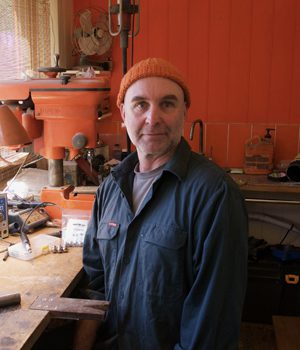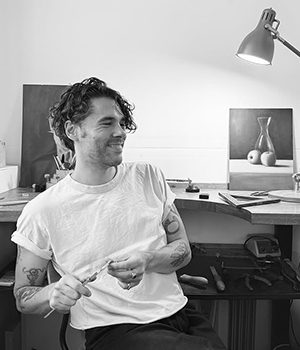In Conversation with Rachael Grigulis
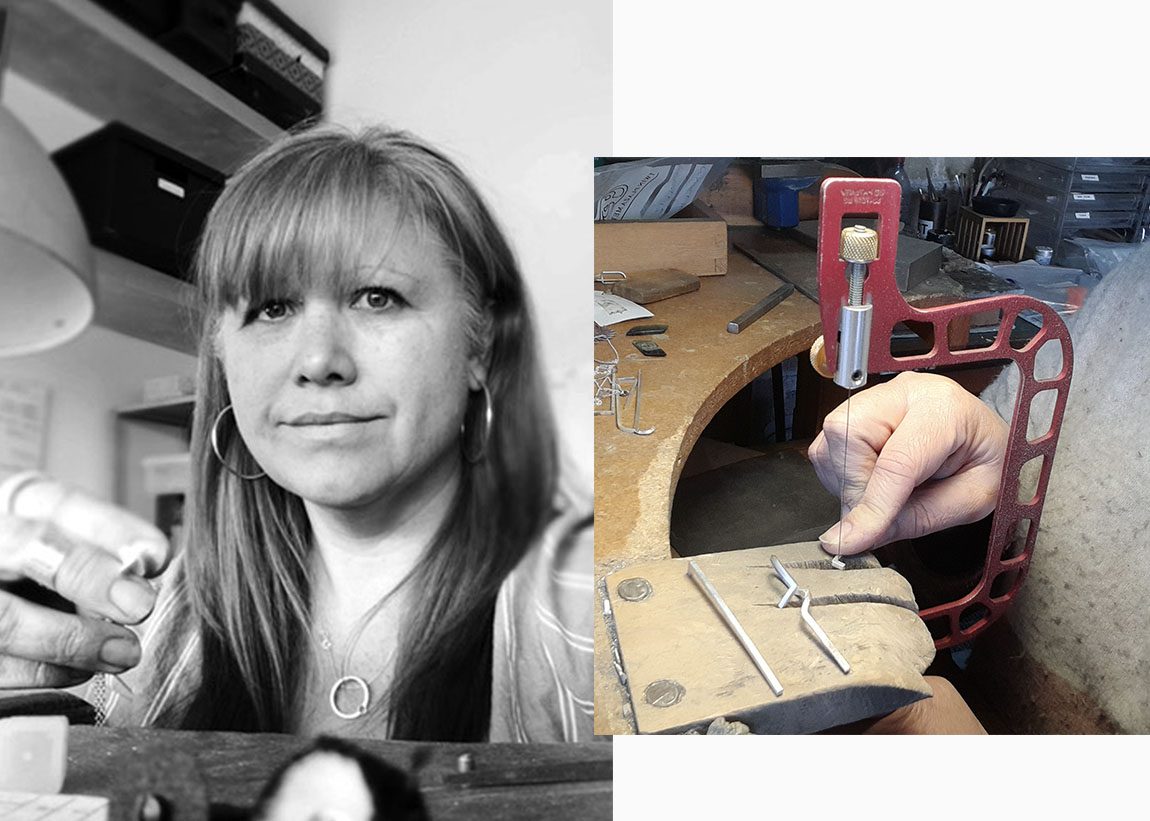
In anticipation of Rachael Grigulis’s upcoming exhibition, LINE/FORM/FLOW, we sat down with the Adelaide-based artist to learn more about her fascination with M.C. Escher, the process of creating her incredibly distinctive pieces and how living in Japan influenced her design. Read on to find out more!
Click here to shop the exhibition.
How did you arrive at jewellery making? Have you worked in other professions in the past?
Many years ago, when finishing high school, I had no idea what direction to head once I was done. I knew I wanted to do something creative, but back then, and not living in the city, I felt there was limited options for me. While in year 12, I did an evening Tafe course in Silversmithing, just out of interest, and I was sold from the first lesson. I then went on to do a bachelor of Design in Jewellery and Silversmithing at Uni SA (this course doesn’t exist anymore).
As a creative, I think we all realize that our incomes need to be supplemented with other work from time to time. When I was in Japan, although I had hand tools with me and kept making as a hobby, to maintain a working visa, I was an English teacher, teaching 2 – 12 year olds. So much fun! And also trained new teachers and was involved in developing curriculum for multiple schools.
When returning to Australia, working in Sydney, I worked in Childcare in the mornings, jewellery during the day and then developed an evening jewellery course through St Andrews College, in the CBD, which I ran for several years before I returned to Adelaide. Teaching jewellery was such an amazingly rewarding thing to do. I had a few students start with me, out of interest, like I did many years ago, then go on to apprenticeships/further study, and are now working in the industry themselves… proud mum moment 😉
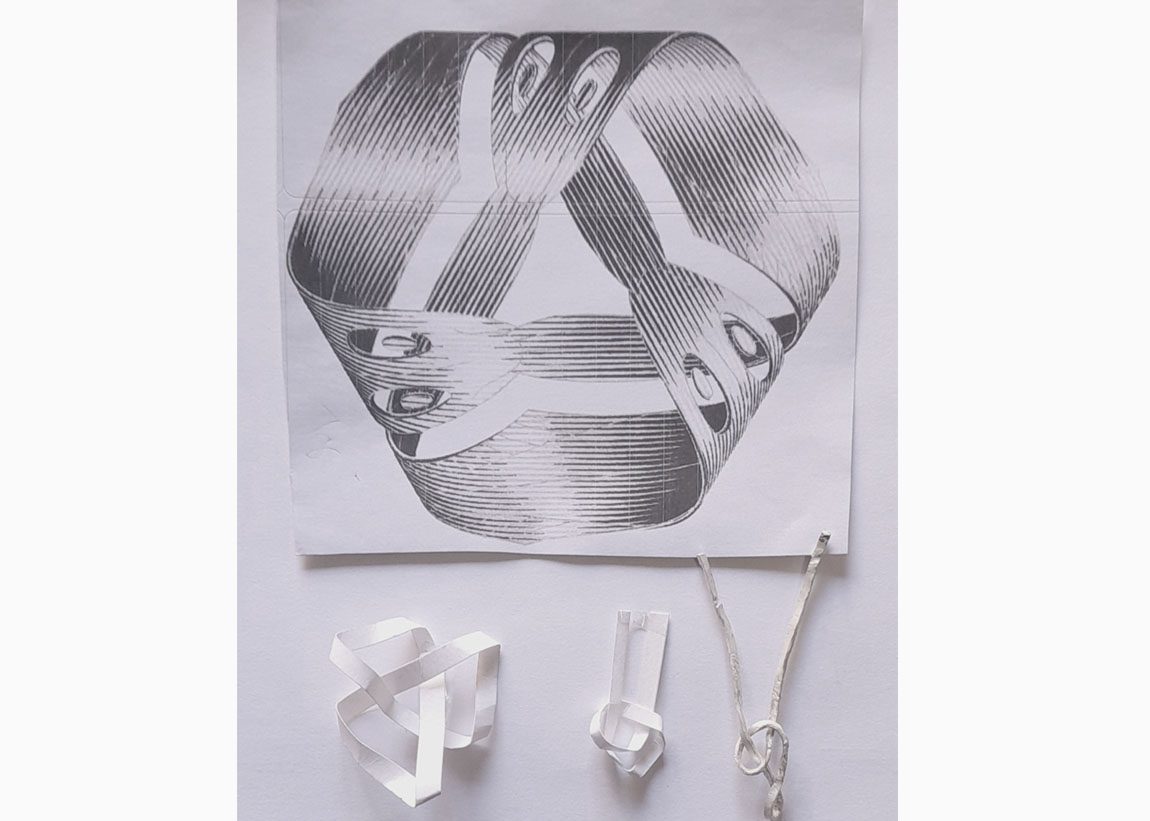
Do you hand make all of your pieces or do you use a combination of CAD/casting and fabrication?
All my work is handmade. I love working with metal. I think that also defines my work in some way. Perhaps I could save myself a lot of stress sometimes if I used alternate processes, but then I personally don’t think it would be as rewarding.
What is it about jewellery making that made you decide to pursue a career in the industry?
The entire process. There are not many professions where you can create a concept and then physically follow it through to fruition with your own two hands. I have never wanted to just be a designer, or make other people’s creations. It’s the creativity, problem solving, making and then the true feeling of humbleness when another person takes a piece you have made into their lives. Knowing I have made another person happy with something from my imagination and hands…. Priceless!!
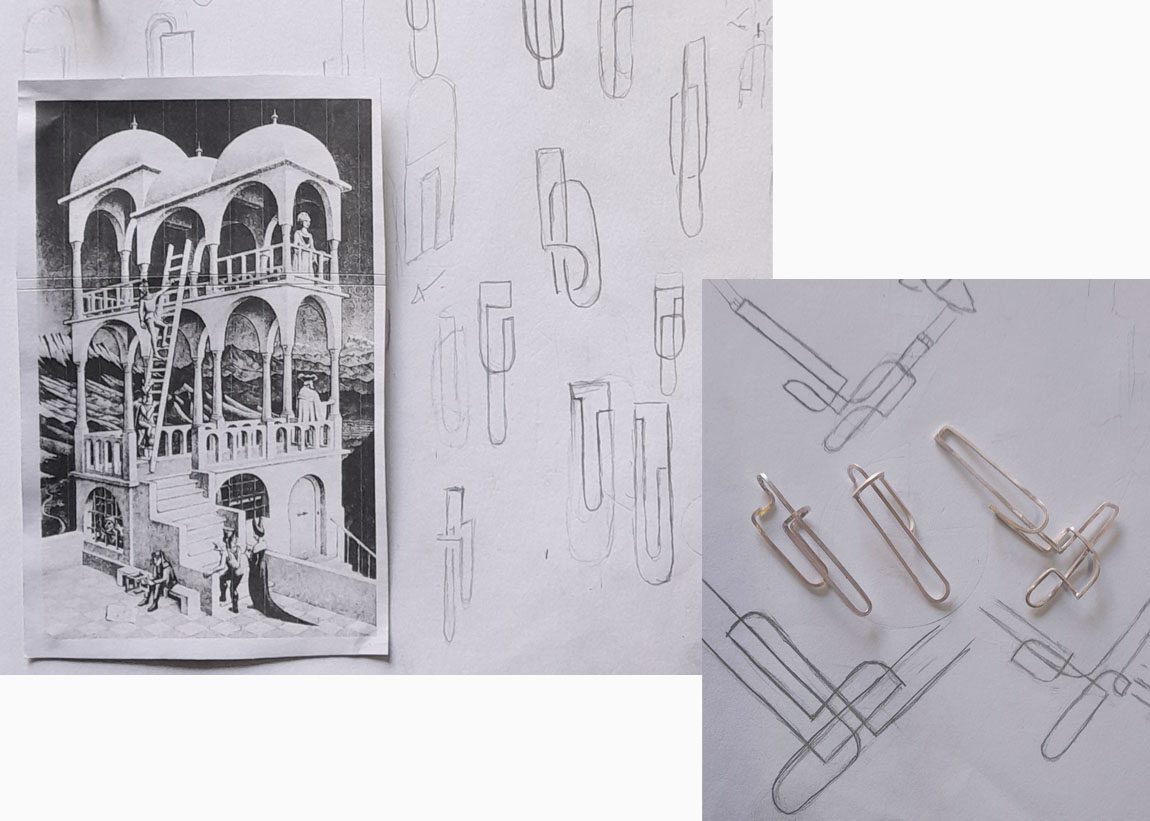
How did living in Japan influence your design and making?
Japan was amazing! I had an infatuation with everything Japanese for as long as I can remember, so to actually live there was a life goal come true. I lived mainly in Kyoto, and I lived in an old Japanese house with Japanese friends, so I guess I experienced it in quite a different way than a lot of visitors. I found inspiration in the juxtaposition all around, from a small alleyway of traditional houses with a futuristic Shin Takamatsu building inserted in between them, like a UFO just landed! Not out of place, just a different perspective of a different time. I learnt that contemporary and traditional can sit side by side and there is a place for both, especially in a field like jewellery. Young people, growing up in such a traditional city with a strong history and tradition, yet in their free time, are proud to express their individuality in such extreme ways through music/dance/art/fashion. I learnt to not be afraid to extend myself, be proud of where you came from because it gives you a direction to head. Japan is all about detail. In their buildings, appearance, packaging. Everything is for a reason and finished to a high quality. I learnt, when you think you have created something, turn it over and look at it from a different perspective. And I guess lastly, creativity isn’t bound by space. I lived and worked in some tiny spaces!!
Your work often includes an amazing array of cabochon cut gems. What do you look for when sourcing your stones?
I look for individuality. I like something that has character, be it in uneven color, slightly miss-matched shape, and uniqueness. My stone pieces have been grouped under the title INCLUSION, not just because of the inclusions in the pieces themselves. It came about by my kids approaching teenage years, and as a mum, what that means. One big thing is Inclusion. It doesn’t matter what you look like, we are all different, and no one is perfect. That led me to think about that in my work. Does a gemstone have to be flawless or can the beauty come from something else? There is a place for it all ☺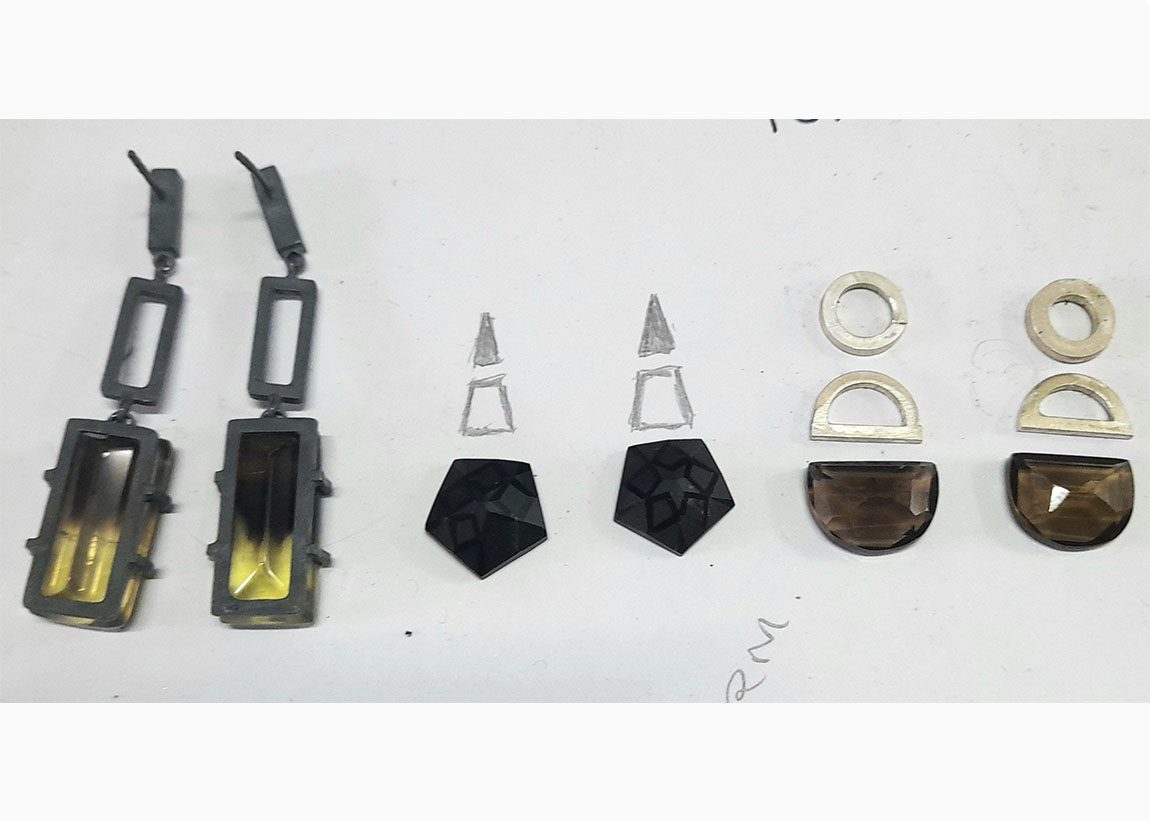 What is your design process? How do your ideas come together – from concept to materialisation? Do you work in paper first or do you start with metal from beginning to end?
What is your design process? How do your ideas come together – from concept to materialisation? Do you work in paper first or do you start with metal from beginning to end?
Paper first mostly. For some of my more complex pieces, I need to do mockups in metal so I can get the full 3d vision, and if it’s for something that I’ll remake, I like to make a master copy to keep. Since having kids, I have found that early on, I was so busy with 2 toddlers and all that came with that, I started designing in my head a lot, as putting pen to paper wasn’t always a practical thing to do. If you ever see me looking vague, just means I’m running a concept through my head!
Other than M.C. Escher, what/who are your biggest design influences?
Anything that is unique. I find inspiration in architecture; old school graffiti linework is intriguing; art deco design. For me, it is shapes, lines, positives and negatives. It doesn’t matter the medium.
You describe your new collection as an, “ode to M.C.Escher” and reference linework and geometric forms. Have you always loved his art? What is it about his art that inspires you?
I think every creative person has wanted to draw two hands drawing each other, or their reflection in a metal sphere! Escher is just unique. The way he envisions the world, and then twists it. It’s intriguing.
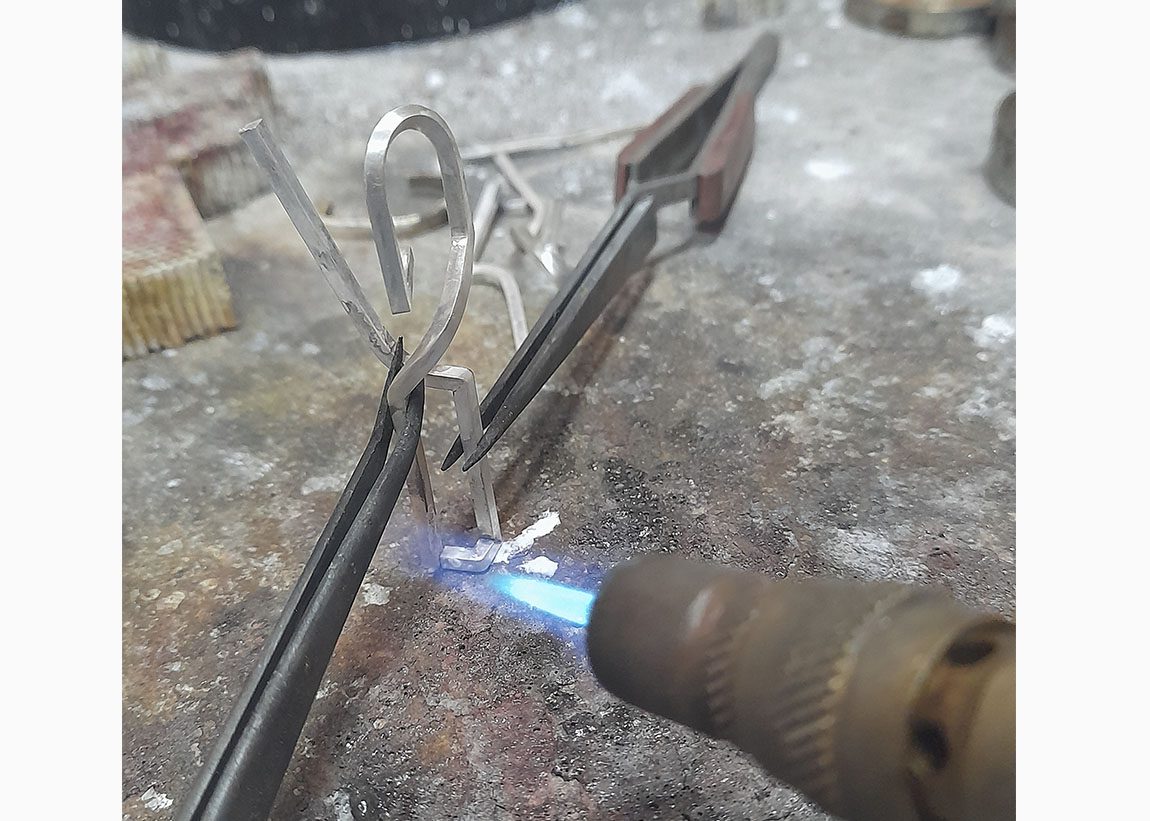
Some of Escher’s artwork is described as ‘impossible drawings’ – a big feat to face for creating tangible objects! How did you approach this element within your work?
That was the challenge! This work was never to be a straight representation of his pieces but an “Ode to” or a “salute to”. In his piece “Belvedere” the arches in the building are impossible, one appearing to be at the back at the top of the picture and then finishing in front at the bottom. I used the angles and shapes of the metal and then polished and matt surfaces to represent forward/back and light/shadow to give the perception of lines overlapping/disappearing etc.
Can you tell us about any challenges/pleasures/surprises you may have faced when making this collection?
I actually thought that the greatest challenge would be the “Flow” element of this exhibition, as I envisioned it as being quite organic, something which I am not known for. I am pleasantly surprised by the results. It was challenging, but came together, I think, really well. Also, I am really happy with the continuity across all LINE/FORM/FLOW. I feel all the pieces read really well together, in any order and next to any piece.
Your work is quite monochrome and geometric, yet so distinctive and innovative. How did you arrive at this, and how has your design process evolved over the years?
My work has evolved quite a lot since I first began. My material of choice used to be titanium, and rivets. Still geometric but I guess quite mechanical and very layered and detailed, and articulated when I could. I think the biggest creative challenge I have ever faced was to minimise what I do. I found it very hard to take away detail, but very happy that I have, and now add that detail back in, in more subtle ways, like metal finishes, and now the addition of colour through gemstones.
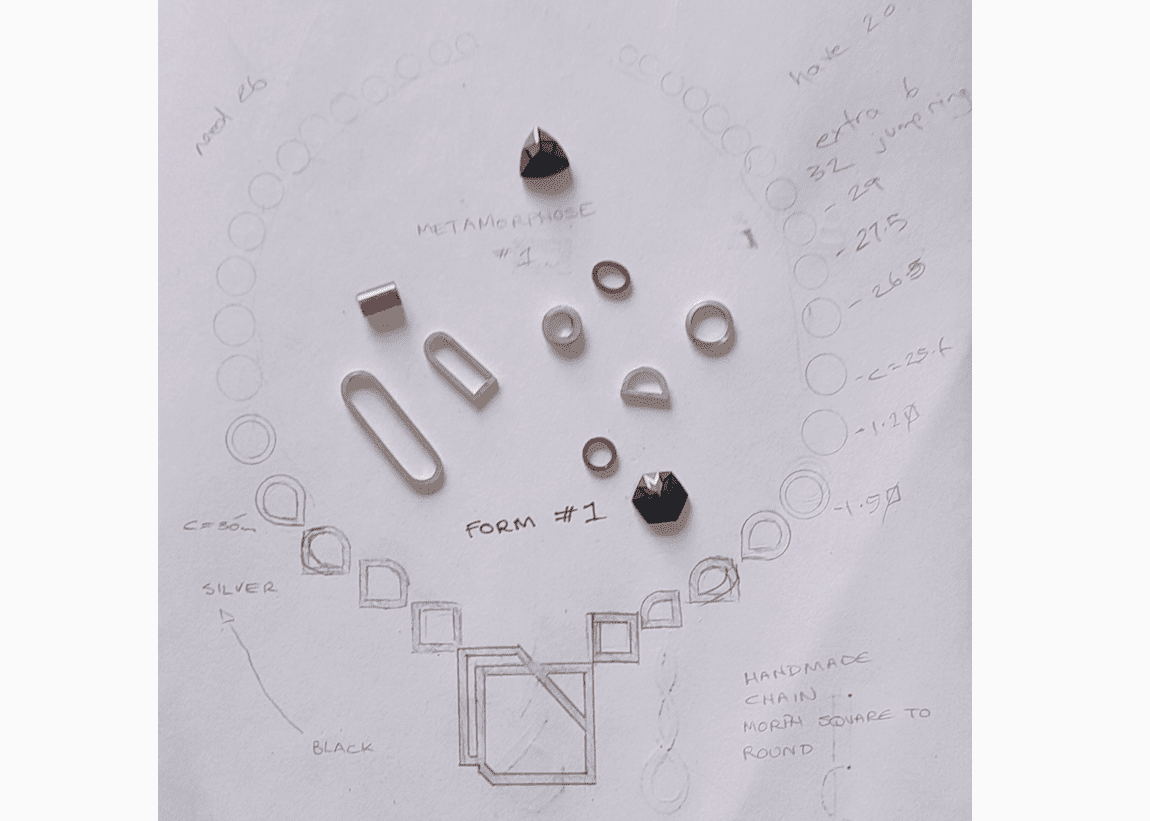
LINE/FORM/FLOW will exhibit at e.g.etal gallery from 15 August to 4 September, 2024.
